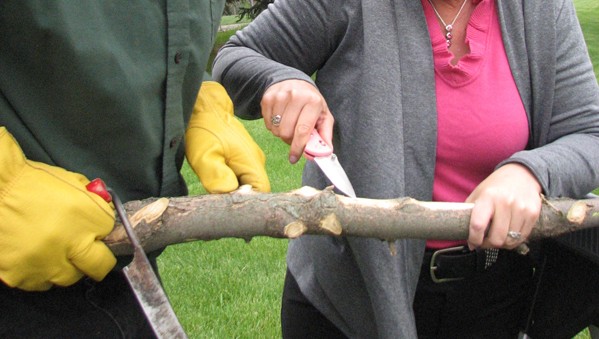
Beating The Beetle, Tackling The Emerald Ash Borer
While it’s small in size, the emerald ash borer is bringing huge changes to the Iowa landscape. The tiny beetle larvae leave tunnels as they eat their way through an infested tree. This destroys the tree’s ability to transport water and nutrients between the canopy and the roots. Trees attacked by the emerald ash borer (EAB) will usually be killed within four years. As the destructive pest spreads, the management challenges can seem overwhelming.
“We’re a river town, and much of the community’s charm comes from a well-established urban canopy,” says Casey Chadwick, city forester for Burlington, which is projected to lose 20 percent or more of its total canopy. “We conservatively estimate that EAB will cost us $1 million with removals and replanting.”
The stakes are even higher in Waterloo, which has more than 4,300 ash trees. “If all the public ash trees were removed by contractors, the city would have to pay approximately $2.4 million,” says Todd Derifield, Waterloo’s urban forester. “To replace all of those trees, the city would have to pay approximately $1.3 million.”
Both Derifield and Chadwick appreciate educational resources from Iowa State University Extension and Outreach. Educating Iowans about EAB is vital, says Jeff Iles, chair of the Iowa State University Department of Horticulture. “Iowans expect ISU to be out in front of issues like his and provide science-based solutions.” EAB stows away in firewood, which is how it is most often transported. An infestation is difficult to detect until the population develops in an area for three to five years, notes Mark Shour, an entomologist with Iowa State University Extension and Outreach.
Shour and his colleagues work closely with the U.S. Department of Agriculture, Iowa Department of Natural Resources and the Iowa Department of Agriculture and Land Stewardship (IDALS) to help slow the spread of EAB, which has been confirmed in Allamakee, Black Hawk, Bremer, Cedar, Des Moines, Jasper, Jefferson, Union and Wapello Counties.
There’s no time to waste, says Robin Pruisner (’94 entomology, pest management), IDALS state entomologist. “EAB is too big of an issue for any one entity to handle. I value Iowa State University’s proactive approach.”
Iowa State University Extension and Outreach has participated in the Iowa EAB Readiness Team since EAB was first discovered in Michigan in 2002, Shour says. “This has permitted time for detailed planning and calculated responses, including tree removals, selected tree treatments and tree replacements.”
There is no one-size-fits-all strategy with EAB, says Laura Jesse, an extension entomologist. “What works for a homeowner with two ash trees may not be feasible for a golf course with 70 ash trees or a city with 5,000 ash trees.”
There are proven solutions, however, to help slow the spread of EAB, starting with firewood. “As we say, don’t pack a pest,” Pruisner says. “Buy it local, burn it local.”
Also, lining street after street with ash or any other singletree species is a flawed plan, Iles says. “We must focus on biological diversity. EAB presents a unique challenge, but it will not deter us from our continuing efforts to make our communities better places to live.”



